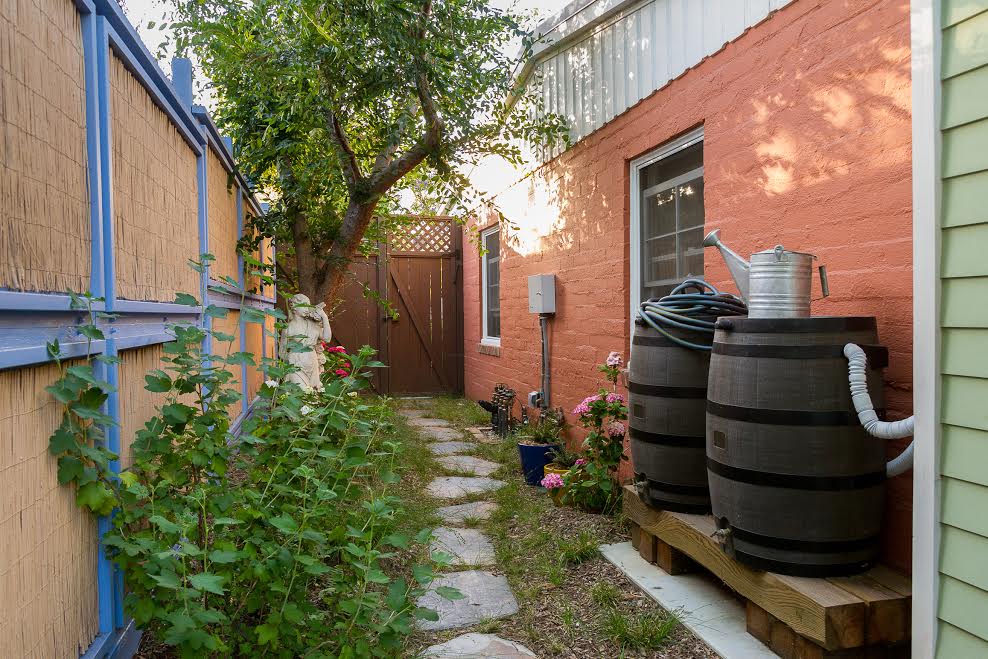“We have enough water to live on, but not enough to waste.” — Dorothy Green, founding president of Heal the Bay.
Dorothy Green wrote these words in an article that was published in the LA Times in 2008, shortly before her death. In it, she outlines an incredibly thoughtful set of recommendations that would create a sustainable water supply.
So it’s disheartening to see people acting in such a way that suggests we aren’t currently in the midst of the driest year in recorded history.
And that’s tempting to do, because when a problem seems daunting it’s pretty common to try to convince yourself that it’s really not that big of a deal. But instead of pretending and ignoring, we can become informed and empower ourselves to take action. Call me crazy, but I’d rather go out fighting than just sitting around doing nothing.
Now, no one wants to be a Chicken Little and run around screaming that the sky is falling or in this case, that the rain is not falling, but the simple fact is that there is no alternative to water, and not much is coming our way.
Yet, instead of harvesting and conserving water, we’ve been wasting what little rain does fall from the sky, and we continue to import tons from distant sources like the Colorado River. Because the City of Los Angeles imports 88% of its water supply from distant sources (as far as 444 miles away!), it takes a lot of energy to make that happen. California expends 15-20% of all of its electrical use just to move, treat, and deliver water across the state. The State Water Project, also known as the California Aqueduct, is the single largest consumer of electricity in California.
But what if, instead, we harvested the rain? What if we pulled up our lawns, planted smarter landscapes filled with less thirsty plants, and used less water? Since our current landscape choices use about 50% of our residential water budgets, our yards are a good place to start. By making a few changes, we can make an enormous impact – in Australia, rain water harvesting helped successfully mitigate their drought.
Want to give it a shot? Harvest rainwater with a rain barrel.
When rain falls on a roof, it usually flows into a system of gutters, streets, and storm drains , eventually making its way into the ocean. Your roof is an ideal catchment area from which you can divert rainwater into a tank – such as a rain barrel.
But wait. What exactly is a rain barrel?
Rain barrels are simply large containers to hold rainwater. They can be repurposed food storage containers, sleek modular wall units, or terracotta-colored urns. There are hundreds of products to choose from.
Where do I put it?
The best place for barrels is under a downspout. If you don’t have gutters, you can position a barrel under a valley in your roofline.
What do I do with the water I catch in my rain barrel?
You can use the water from your barrel to water your garden, whether by hand, hose, or drip irrigation. Rain barrels should be raised about 18 inches off the ground to allow gravity to help move water through your garden. (Attention parents: a rain barrel and set of watering cans can keep children happily occupied for an hour or more!)
What about mosquitos and earthquakes?
Just take these simple steps to be worry-free: Use a screened lid. Clean and empty your barrel as needed. And finally, strap it into place.
Awesome! How do I get started?
A 50-75 gallon rain barrel is a really nice start. It’s a quick DIY project and can be done for about $150. Submit the rebate and you get the barrel for just $10!
How do I learn more?
Come to our rainwater harvesting workshop on September 13th and learn all you need to know. You’ll quickly get a good overview of how valuable and empowering rainwater harvesting can be.

